State parks to remain fully open, thanks to friendly feds
November 23, 2009
The National Parks Service has come to the rescue of the highly popular state parks in the Santa Monica Mountains, providing a grant of $939,169 to avoid cutbacks that would have been likely because of Sacramento’s budget shortfall.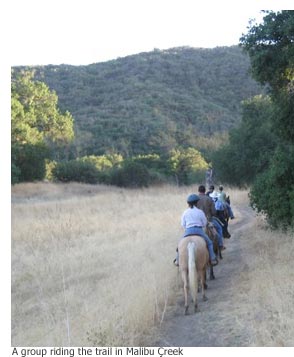
The state has seven parks in the Santa Monica Mountains area—including Leo Carrillo, Topanga, Will Rogers, Point Dume and Malibu Lagoon—with campgrounds at Leo Carrillo, Malibu Creek, Point Mugu and Thornhill Broom. About 3 to 4 million people visit each year.
“As a result of this grant, the public should experience no reduction in services or operating hours when they visit the many beautiful state parks and beaches within the national recreation area,” Woody Smeck, superintendent of the Santa Monica Mountains National Recreation Area, said in an e-mail to State Senator Fran Pavley and Assembly Member Julia Brownley.
“We’re just pleased that we can bridge the gap,” Smeck said later in an interview. “This grant is really an investment in maintaining a good national-state park system here in Southern California.”
The grant, made to the Angeles District of California State Parks, was issued Friday.
Without the infusion of funds, state parks officials would have had to reduce services, said Ron Schafer, district superintendent of the Angeles District, California State Parks. “It could have been significant,” he said pointing to a laundry list of “usual suspects”—ranging from bathroom closures at campgrounds to reduced hours and seasonal closings.
Supervisor Zev Yaroslavsky, whose district includes the Santa Monica Mountains, said he was thrilled by the level of intergovernmental cooperation that clearly is accruing to the public’s benefit.
“Protecting and operating these precious parklands is a cooperative venture, and no level of government can do it alone,” the supervisor said. “In light of the dire fiscal situation in Sacramento, I’m very grateful that Washington was able and willing to step in and assist us this year for the benefit of the public.”
Assembly member Brownley agreed.
“The NPS stepping up in this very significant way is just one more example of the extraordinary working partnerships we have among the various park agencies. I don’t ever want to see a single one of our precious state parks or beaches closed to the public. We are the stewards of these unique resources and have an obligation to protect and preserve them, not to shutter them. I can’t say enough to express my gratitude to the NPS for this wonderful gift.”
The national parks service is not only acting to benefit users of the state parks—there’s also an element of self-interest, Smeck said.
Because the state and national parks are “interlocking,” any notion of closing the state parks for, say, one day a week or for an entire month at a stretch, would have presented difficulties for his staff, Smeck said. Boundaries are porous, and fire safety would have been an issue in an unattended park. In addition, the burden of any search and rescues would have fallen upon the national parks service.
“As the nearest emergency responder and provider of park programs,” Smeck said in his e-mail, “the National Park Service would have directly felt the consequence of state park service reductions.
New campaign takes aim at hunger
November 23, 2009
Hunger in Los Angeles County is visible to anyone who chooses to look closely.
For Supervisor Zev Yaroslavsky, that fact hit home again last week as he made one of his frequent drives past the SOVA food pantry near his house. “I’ve never seen a line there that long,” he said.
For Los Angeles Unified School District board member Steve Zimmer, it came last year in the actions of a boy he was tutoring in an after-school program in Northeast Los Angeles. Rather than devour an ice cream cup he’d earned as a prize, the youngster tucked it in his backpack to save for breakfast the next morning. “When you see that simple act of a six year old, it kind of hits you in the gut,” Zimmer said.
Stories and statistics of the rising tide of hunger in Los Angeles flowed Monday morning at a conference to launch Fed Up With Hunger, a major initiative to combat widespread hunger and malnutrition in L.A. The project of The Jewish Federation of Greater Los Angeles aims to combine government, private and corporate efforts to understand and combat a pervasive hunger that leaves more than one in eight L.A. area residents hungry every day. To expand awareness, the campaign produced a report entitled, “Hungry No More: A Blueprint to End Hunger in Los Angeles.”
The goal is ambitious—“not just to address hunger in Los Angeles but to actually solve it,” said Fed Up With Hunger Chairman Ron Galperin. In a video shot for the campaign, actress Debra Messing noted that hunger is so pervasive that “with one million people in our city hungry every day, it not them, it’s us.”
The project has three major aims:
• To declare Los Angeles a “Hunger-Free Zone.”
• To improve food assistance programs.
• To increase access to nutritious quality food.
The effort also encourages local officials to beef up existing hunger-fighting organizations and bring innovative approaches to the battle.
This week, Supervisor Yaroslavsky will introduce a motion directing county departments to “expand the reach of existing anti-hunger programs” and to “explore future goals and benchmarks” using the “Blueprint” report as a starting point. “We will use all of our resources and know-how” to attack hunger, Yaroslavsky said.
Los Angeles City Councilmember Paul Koretz pledged to help “bring visibility to an otherwise invisible issue” by introducing legislation to push city departments—from Parks and Recreation to the LAPD—to ways to identify and serve hungry populations.
One target of opportunity: signing up thousands of Los Angeles families who qualify for federal food assistance but haven’t signed up. Food stamps, for instance, can add $100 a month in groceries to a family’s kitchen. Zimmer, the school board member, suggested that neighborhood schools, which already sign up children for federal breakfast and lunch programs, could become focal points for signing up entire families.
Data shows that the need for these kinds of services is greater than it has been for decades. Food banks have reported a heavy demand as unemployment in Los Angeles has hit 12.7 percent and homes continue to fall into foreclosure. Since 2007, demand has spiked 85 percent at Jewish Family Service’s three SOVA food pantries, said Paul Castro, executive director of JFS.
Hunger issues are complex. Some aspects are easy to understand, such as families who simply can’t afford to feed their children and seniors who must choose between food, medication and rent. More difficult issues include how to end the problem of “food deserts,” poorer communities where high-quality food is scarce. Many communities have an overabundance of high-calorie junk food outlets but lack grocery stores that sell fresh fruits and vegetables. Obesity due to over consumption of nutrient-poor foods can also hit those who are going hungry, leading to diabetes.
One key partner in Fed Up With Hunger is MAZON: A Jewish Response to Hunger, a national anti-hunger group (Mazon means ‘food’ in Hebrew) based in West Los Angeles. At Monday’s event, MAZON Vice President Leslie Friedman announced the awarding of 10 “micro grants” to local hunger-fighting organizations. Among the recipients: the Valley Interfaith Council, Food Forward, Temple Emanuel and Jewish Family Service.
Wild females (Medfly variety) crash party
November 23, 2009
 Ah, autumn at the Santa Monica Farmers Market: Heaps of glistening Meyer lemons, crisp Pink Lady apples, fragrant tangerines and guavas, deep orange persimmons…and acres of tulle netting and PVC pipe?
Ah, autumn at the Santa Monica Farmers Market: Heaps of glistening Meyer lemons, crisp Pink Lady apples, fragrant tangerines and guavas, deep orange persimmons…and acres of tulle netting and PVC pipe?
The inedible items on that list are courtesy of some uninvited guests—three wild female Mediterranean fruit flies, two of them sexually mature and “mated.” The flies crashed the Thanksgiving party early at Westside farmers markets, triggering a quarantine that will affect Santa Monica’s four markets and those in 11 other areas for months. In all, 17 certified farmers markets are affected.
That means that farmer-vendors at venues including the Wednesday Santa Monica market—widely regarded as one of the nation’s premier markets, and a must-shop-stop for L.A.’s top chefs—must protect all host fruit while it is on display in the quarantine area. And while they can bring in crops from outside the quarantine area, they can’t bring home unsold fruits and vegetables. Those must be either donated or dumped.
“Sales are going to go down,” says Dolores Cabral of Cabral Farms in Ontario, who sells at Santa Monica’s Saturday market. “People are going to ask questions. I’ve been through those quarantines for many years. It’s a big hassle with the nets.”
 The timing is terrible—this week’s pre-Thanksgiving Wednesday market in Santa Monica is the biggest of the year—but veteran market folks say it’s nothing they can’t handle.
The timing is terrible—this week’s pre-Thanksgiving Wednesday market in Santa Monica is the biggest of the year—but veteran market folks say it’s nothing they can’t handle.
“Fortunately, right now, it’s a fairly small deal,” says Laura Avery, supervisor of the Santa Monica Farmers Markets. “We’ve all been through this. We all know what to do.”
Phil McGrath of McGrath Family Farm in Camarillo, who will be selling produce ranging from heirloom tomatoes to haricot beans, agreed, but said this week’s “Thanksgiving Wednesday,” as it’s known at the market, will have an extra layer of complications on an already demanding day. “We double pick and triple pick items. We know it’s a big day… It’s a food frenzy.”
He said that he did not expect to take an economic hit, however. “We have such a loyal customer base,” McGrath said Tuesday. “The cash customers tomorrow are the truly the heart and soul of our business…There’s the Medfly hassle factor, but I know we’re going to sell out.”
The Medflies were caught Oct. 29 in a Santa Monica backyard in the one of the tens of thousands of traps that Los Angeles County has placed throughout the area. County Agricultural Commissioner Kurt E. Floren told the Board of Supervisors in a letter that day that the immediate area has been treated with hand-sprayed Spinosad bait, an organic product derived from soil bacteria. No aerial spraying is planned.
The quarantine, mapped here by the California Department of Food and Agriculture, affects a 65-square-mile radius from Santa Monica, taking in markets in Pacific Palisades, Venice, Mar Vista, Culver City, Westwood, Westwood Village, Brentwood, Century City, Playa Vista and West Los Angeles, as well as the La Cienega market.
The list of possible host fruits and vegetables that must be covered with tulle netting propped up with PVC piping includes eggplant, tomatoes, bell peppers, apples and avocados, as well as all citrus.
“The farmers are very good. The customers are very supportive. We’re not going to be (aerial) spraying,” Avery says. “The bottom line is nobody wants this bug to spread. The Medfly has never been established in California because of these procedures.”
USDA spokesman Larry Hawkins, who said other Medfly quarantines are currently in effect in San Diego County communities including Fallbrook and El Cajon, said the Santa Monica quarantine is expected to last six months, and possibly longer. He said vigilance is essential because the Medfly is such a destructive bug, known to infest 260 varieties of fruits, nuts and vegetables: “It’s the most significant fruit fly pest on the planet.”
Under quarantine rules, people who grow fruit at home are not allowed to transport it from their property. This state brochure contains other information about how consumers should handle Medfly issues.
County agriculture officials are particularly concerned about travelers bringing in fruit from places like Hawaii and Mexico.
“We don’t know where these Medflies came from this time,” department spokesman Ken Pellman says. “But we need the public’s help in not bringing in fruits, vegetables, and plant material from outside of the state or country unless it has been officially inspected, and not taking those things elsewhere when they are under quarantine.”
Taking the temperature at MLK
November 19, 2009
No one will feel the impact more keenly of the deal between Los Angeles County and the University of California than the patients of Martin Luther King Jr. hospital.
Patients and family members interviewed there Thursday shared high hopes that the partnership to operate the 40-year-old hospital complex in Watts will dramatically improve and expand medical services to the South L.A. communities it was built to serve.
Most thought that UC physicians enjoyed a high reputation and expect staffing levels to improve. Patients also hope that the new operators will move quickly to reopen shuttered hospital services such as the emergency room and expand specialty medical care to cut wait times and improve service.
Today’s UC vote brought a holiday spirit to the beleaguered medical facility. Second District Supervisor Mark Ridley-Thomas hosted a raucous lunchtime celebration in the hospital’s auditorium with patients, community members, hospital staffers and union officials. Many were sporting stickers reading “Open a New MLK Hospital. We are ready to partner.”
Even patients who didn’t know about the new agreement were optimistic. “I think it’ll be great,” said Marco Godoy, 42, of Norwalk, visiting the Urgent Care clinic with his son Andrew, 21, who’d injured his foot. “This hospital has had a reputation for not being well run. With the leadership coming in from the UC, I think service can only go up.”
Many patients expect a more streamlined and effective administration. Timothy Bingham, 62, believes that the old regime’s major shortcoming wasn’t ineffective medical care. The real problems, he argues, were caused by administrators who “operated and manipulated” the hospital as a jobs program rather than as a health-care provider.
“This is a nice facility, and the community deserves that it be well run for everyone’s benefit,” said Bingham, a retired schoolteacher who was receiving dental care at the hospital on Thursday.
Security guard Markus Cook said he also looked forward to a new day of improved administration and medical care for Watts and all of South Los Angeles County. “I would expect the UC to do a better job running the hospital,” said Cook, who retired from the Los Angeles Housing Authority and was keeping an eye on a remote parking lot Wednesday. “They have a better reputation and they’ll want to protect it.”
Still, a few patients had reservations about the advent of the UC regime.
“I’d rather not see them come in,” complained Tony Allen, 77, who said was happy with MLK hospital services before the closure. He’s afraid UC medical personnel will be “elite…prima donnas” culturally unable to connect with the hospital’s working class patients. “They wouldn’t know how to act with the community,” said Allen, a musician who leads the Watts 103rd Street Band and sat ramrod straight as he waited to obtain heart medication. Calling his doctor “the best,” Allen said he doesn’t want to lose him in the changeover.
Despite such misgivings, hopes are high that the chaos of recent years is nearing an end. Said Jeanetta Shamburger, who was visiting the internal medicine clinic for a checkup: “I expect to see more doctors here, and I think there’ll be less pressure on them” as they strive to deliver good medicine in an area that needs and deserves it.
MLK hospital: “Like a Phoenix rising” *
November 19, 2009
The University of California regents voted today to join forces with Los Angeles County to create a new hospital at the site of Martin Luther King Jr.-Harbor Medical Center—a signal of hope, innovation and commitment rising from one of the nation’s most distressing health care failures.
The unanimous vote, which came moments after the regents’ health services committee approved the plan, creates a partnership widely hailed as a potential national model.
“This is like a Phoenix rising in the heart of South Los Angeles,” said Regent Monica Lozano.
UC President Mark Yudof called it “a proud day for the University of California….This is what we do—public service.” He pledged that the new facility would deliver “not just adequate care” but “the best medical care.”
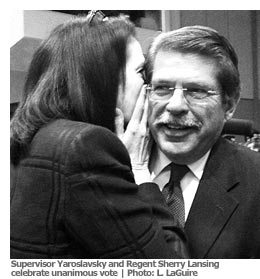 Supervisor Zev Yaroslavsky first advanced the idea of a County-UC partnership in a Los Angeles Times Op-Ed piece last year. “What a difference 18 months makes,” the supervisor said. “This is going to be a great partnership.”
Supervisor Zev Yaroslavsky first advanced the idea of a County-UC partnership in a Los Angeles Times Op-Ed piece last year. “What a difference 18 months makes,” the supervisor said. “This is going to be a great partnership.”
Supervisor Mark Ridley-Thomas, whose district includes the hospital, summed up the feelings of many when he stated simply that the union between L.A. County and the University of California “will have a lasting effect on the quality of health care in Los Angeles.”
After years of mismanagement and patient care lapses, the hospital was dropped from the Medicare program in 2006 and was closed to in-patient services the following year.
Under the new agreement, which now goes to the Board of Supervisors for approval, the county would create a $50 million start-up fund for the hospital and pay $50 million a year to run it, with an additional $13.3 million in county funds going to support indigent care services at the facility each year. It also would provide a $20 million revolving line of credit.
In addition, the county is spending $208.5 million to rebuild the hospital facility and bring it up to seismic safety standards, and $145.3 million to build a new multi-service ambulatory care center (MACC) nearby.
For its part, the UC would provide the “broad spectrum of physician services necessary to operate the hospital” and would direct any teaching activities at the site.
A nonprofit corporation would oversee the new 120-bed hospital, with a seven-member board of directors appointed by the UC President and Los Angeles County.
The relatively small crowd inside the regent’s meeting room in Covel Commons on the UCLA campus on Thursday was sedate compared to the loud crowd of students outside protesting fee hikes. But they erupted into vigorous applause after the vote, and county officials in attendance embraced their UC counterparts.
“Now the real work begins,” L.A. County Chief Executive Officer William Fujioka said, noting that changes to the building schedule should allow completion of the capital project by the end of 2012. “The hope is to get this done in a three-year period.”
For many in the community who’ve followed the MLK hospital saga over the years, the UC’s involvement was critical—a “brilliant stroke,” in the words of Barbara Siegel of Neighborhood Legal Services. “It instills the confidence back into the hospital.”
“It will carry the imprimatur of quality that the UC is known for,” added Dr. Hector Flores, chair of family medicine at White Memorial Medical Center, who has been a close observer of MLK since he was appointed chair of the county’s Hospital Advisory Board in 2004.
Flores also noted that the county’s commitment to funding the new hospital is just as important—symbolically and practically—as the UC’s commitment to providing medical expertise.
“Knowing that there’s going to be a facility with safety net support from the county is important,” Flores said. “When you have a new facility in an underserved community, you worry that it’s going to end up closing.”
*Updated (12/1):
The Board of Supervisors today directed the county’s chief executive officer to hammer out specifics of a coordination agreement with the University of California for the new MLK hospital.
The supervisors also authorized CEO William Fujioka to create a project management team to oversee key next steps, including forming the non-profit and helping with its start-up; overseeing and coordinating the building process; and working out agreements on matters including indigent care.
“This is the beginning of a substantial effort,” Fujioka told the board.
The motion, by Supervisor Mark Ridley-Thomas, requires the CEO to provide progress reports to the board at least every three months on project milestones and anticipated costs. An amendment by Supervisor Michael D. Antonovich directed Fujioka to provide “actual expenditures, both anticipated and unanticipated” on the project, as well as projected budgets for construction and for the cost of putting into place the organization that will run the new hospital.
At the meeting, Fujioka introduced members of the “King Team”—a cross-departmental group of 14 that has helped push the project to this point. Among those saluting their work was Supervisor Zev Yaroslavsky, who hailed the recent regents’ vote as an “important milestone” and said, “I just want to congratulate everyone who’s been a part of this.”
Rescue on the rocks of Catalina
November 18, 2009
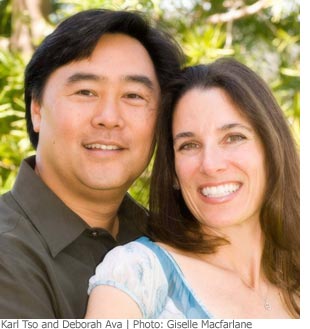 As they walked up the hill overlooking the ocean, the Topanga couple only wanted to test the ham radios they’d been trained to use in a disaster.
As they walked up the hill overlooking the ocean, the Topanga couple only wanted to test the ham radios they’d been trained to use in a disaster.
Instead, Karl Tso and Deborah Ava ran into a real-life emergency on Catalina. Their quick work one night late last month helped save the life of a man who was half-conscious and bleeding at the rocky bottom of a 35-foot cliff.
By spotting the man and rushing to alert authorities, Tso and Ava set in motion a rescue operation that included the county’s Baywatch paramedics and an airlift to a mainland hospital in a county Fire Department helicopter. At a board meeting early next month, Supervisor Zev Yaroslavsky will be presenting Tso and Ava with a commendation. “Karl Tso and Deborah Ava exemplify how dedicated volunteers can empower themselves to help others in times of emergency, and even save lives,” the supervisor said in his citation.
Tso and Ava had traveled to the Camp Emerald Bay Boy Scout camp for an overnight trip with their two Cub Scout sons on October 23. At 9:30 p.m., as their boys played with counselors and fellow scouts, the couple took a walk up a hillside above Doctor’s Cove. It was high enough, Tso figured, to test out the two-way radios on which they’d been trained to coordinate community disaster efforts with the volunteer Topanga Coalition for Emergency Preparedness. The ham, or amateur, radio operators can continue to keep neighbors informed and connected even when cell and other phone services go down. “In a disaster, that’s critical,” notes Tso, who obtained his ham license last spring.
Part way up the hill, Ava says she heard an “eerie moaning sound” below. Tso shined a powerful police flashlight along the water’s edge, where he saw the injured man sprawled across the jagged boulders.
He’d evidently slipped from the same trail they were on. “The way he was laying there, I thought he’d broken his spine,” Tso says. Tso and Ava yelled to him. “We couldn’t tell whether he could hear us at all,” Tso recalls.
The couple ran back down the trail and alerted counselors to phone 911. Then they returned to the vantage point above the man, later identified as Peter Conn, 59, who’d also come to Emerald Bay with his son for the Cub Scout weekend.
Counselors and parents came to assist, but for a time it was unclear to Tso whether the 911 call was successful. So, using his ham radio, Tso sent out an emergency message for anyone on the mainland, more than 20 miles away. He reached L.A. Sheriff’s Sergeant Scott Bastian, a ham radio enthusiast who was driving home to Fullerton after finishing his shift at the Men’s Central Jail in downtown L.A. Bastian quickly phoned the Sheriff’s Radio Center and confirmed for Tso that “Baywatch as well as Sheriff’s Rescue was on the way.”
When the Baywatch boat arrived, paramedic Joel Gitelson swam ashore and, with the help of camp counselors who’d made their way to the injured man, immobilized Conn on a “back board” to prevent further injury. Gitelson then rowed Conn from the beach to the waiting rescue boat, Isthmus, in a borrowed skiff.
On the cliff above, Tso was happy to hear Conn complain to paramedics that his leg hurt “because that meant he hadn’t severed his spine,” Tso recalled. The Isthmus took Conn to a shore-side heliport where a chopper crew airlifted him to St. Mary’s Hospital in Long Beach.Conn sustained a broken jaw and had swallowed teeth jarred loose in the fall. He also suffered multiple fractures of a hand, leg and hip. Last week, Conn was moved to a hospital closer to home, where he’s “making progress,” says Gail Conn, his wife and business partner in an interactive market-research firm.
The family is grateful for Tso’s and Ava’s quick thinking. “We owe them everything,” says Gail Conn, who says her husband could well have bled to death had he not been rescued quickly. “He was very lucky to be found when he was.”
For their part, Tso, who designs and builds homes, and Ava, a packaging designer at Mattel, found the experience a little “surreal.” But as Ava says, “It was thrilling that we were able to help the man.” In fact, they’d attended a disaster radio training session just two days before the outing. “It’s so ironic that we’d just been to the class,” Ava laughed. “And, then, boom, it all just worked.”
Regents’ landmark MLK hospital vote expected Thursday
November 18, 2009
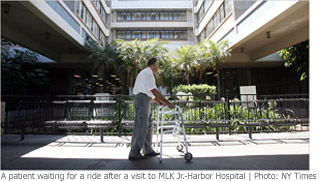 After months of negotiations, the plan to create a thoroughly transformed hospital on the site of the former Martin Luther King Jr./Drew Medical Center comes down to nine people: the members of the University of California Board of Regents’ committee on health services.
After months of negotiations, the plan to create a thoroughly transformed hospital on the site of the former Martin Luther King Jr./Drew Medical Center comes down to nine people: the members of the University of California Board of Regents’ committee on health services.
The deal that UC Senior Vice President John Stobo will present to the committee Thursday morning at UCLA’s Covel Commons calls for the creation of a new community hospital—staffed by UC doctors, funded by L.A. County and governed by a newly-formed private nonprofit corporation.
Hundreds are expected to attend the meeting, a milestone in the difficult journey to chart a new course for MLK, which closed as an inpatient facility in 2007, following years of mismanagement, neglect and poor patient care.
The UC partnership idea was first put forward by Supervisor Zev Yaroslavsky last year in an L.A. Times Op-Ed piece and has gathered momentum ever since. The regents’ vote would be the first to formally link the county and the UC on this project.
UC President Mark G. Yudof supports the proposed deal and is urging the health services committee to recommend its passage to the full board. If approved by the committee—which is headed by Sherry Lansing, the Regents’ vice-chair—the proposed agreement would move quickly to the full Board of Regents, which could take action immediately. The Los Angeles County Board of Supervisors also would need to approve it.
“For myself, I can say that I am very, very supportive of it,” Lansing said Wednesday. She said that she had not discussed it with other regents but she believes that they, too, are committed, in general, to a mission of providing healthcare in under-served communities.
“I myself feel it’s a moral imperative,” Lansing said. “The holdback is that we’ve had these enormous cuts in the legislature…We needed to be assured from a financial standpoint.” She applauded the work of the county and of Stobo and said that she believes those assurances are now in place.
Under the agreement, the county would create a $50 million start-up fund for the hospital and pay $50 million a year to run it, with an additional $13.3 million in county funds going to support indigent care services at the facility each year. It also would provide a $20 million revolving line of credit. In addition, the county is spending $208.5 million to rebuild the hospital facility and bring it up to seismic safety standards, and $145.3 million to build a new multi-service ambulatory care center (MACC) nearby.
For its part, the UC would provide the “broad spectrum of physician services necessary to operate the hospital” and would direct any teaching activities at the site.
The nonprofit corporation in charge of the new 120-bed hospital—which could open as early as late 2012—would be overseen by a seven-member board of directors appointed by the UC President and Los Angeles County.
Although the UC’s analysis shows the new hospital would be expected to have a positive cash flow, the university system asked for and received a commitment from L.A. County to secure a $100 million letter of credit to “backstop” its commitment to funding the new institution over the first six years.
Let’s take a Great Walk
November 12, 2009
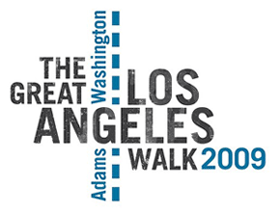 Urban hikers, take note: The Great Los Angeles Walk 2009 is fast approaching, and anyone interested in taking part in the cross-town odyssey (this year’s route runs from the Shrine Auditorium downtown to Venice, by way of some West Adams district architectural sightseeing) should block out about eight hours on their schedule on Saturday, November 21. Read more at
Urban hikers, take note: The Great Los Angeles Walk 2009 is fast approaching, and anyone interested in taking part in the cross-town odyssey (this year’s route runs from the Shrine Auditorium downtown to Venice, by way of some West Adams district architectural sightseeing) should block out about eight hours on their schedule on Saturday, November 21. Read more at
the Franklin Avenue blog or at the Great Walk website.
Here is a video from last year’s event:

Meanwhile, our friends over at Metro’s new blog The Source have created a guide to getting there via public transportation.
Zev with Placido Domingo, Hollywood Bowl 08/25/09
November 10, 2009




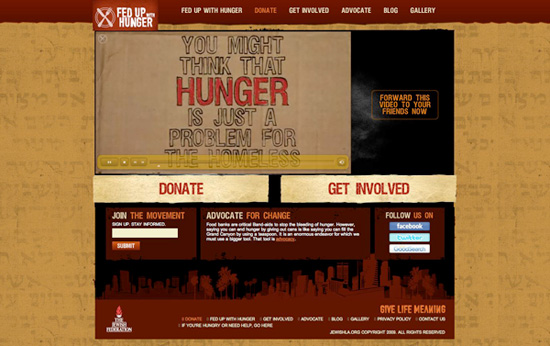
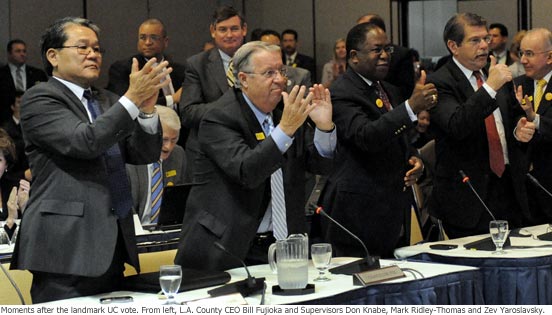






 Check for the latest closure information
Check for the latest closure information








